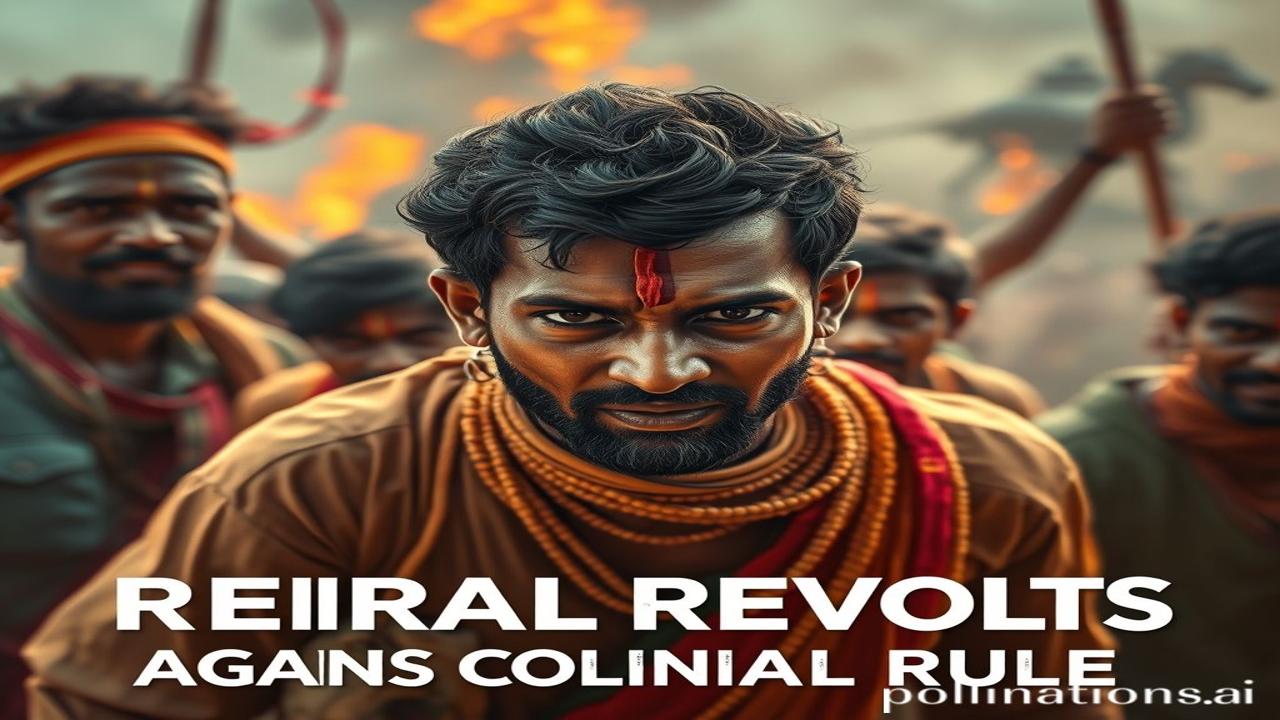Dhool Bhari Pukar: Unsung Stories of Rural Revolts Against Colonial Rule
Imagine yourself standing in a dusty field, the sun beating down on your face. You can almost hear the whispers of generations past, the echoes of angry shouts, the muffled sobs of loss. This isn’t just any field; it’s a battlefield, a testament to the unwavering spirit of rural India that dared to challenge the mighty colonial power. Kabhi socha hai, in mitti mein kitni kahaniyan dafan hain?
British Raj Aur Gaon Ka Dard: The Backdrop
Colonial rule wasn’t just about fancy buildings in Delhi or Mumbai. It was about the systematic exploitation of rural India. It started subtly, but soon engulfed the very fabric of village life.
- What: Rural revolts were uprisings against the oppressive policies and economic exploitation imposed by the British East India Company and later, the British Raj.
- When & Where: These revolts spanned the entire period of British rule, from the late 18th century to the mid-20th century, erupting across different regions of India, from Bengal to Maharashtra, from Punjab to the South.
- Why: The British brought with them new land revenue systems (like the Permanent Settlement, Ryotwari System, Mahalwari System), which pushed peasants into debt and forced them to forfeit their land. Traditional industries were destroyed, and the rural economy was shattered. This led to widespread discontent, forcing people to take up arms. It was a fight for izzat, for survival, for the right to live with dignity. It was a fight for Swaraj, much before that term became a national call.
Zameeni Sach: Jeevan Sangharsh Aur Vidroh
Let’s paint a picture. Imagine Rukmini, a village woman, her hands calloused from years of working in the fields. Her husband, a farmer named Kishan, is struggling to make ends meet under the crushing burden of taxes. He used to sing songs while tilling the land, songs of hope and prosperity. Now, his voice is heavy with worry.
Kishan: “Rukmini, yeh Angrez toh hamari mitti bhi nichod lenge. Hum kya khayenge? Kya denge apne bachhon ko?” (Rukmini, these British will suck the very life out of our soil. What will we eat? What will we give to our children?)
The village panchayat meets in secret, huddled under the ancient banyan tree. They whisper of rebellion, of following the footsteps of brave souls who have risen against the firangi before them. They remember the stories of Sanyasi Revolt, of the Paika Rebellion, of the Santhal Hul.
Dharohar Aur Pehchan: Echoes of Resistance Today
Even today, the spirit of resistance lingers in the air of rural India. We see it in the resilience of farmers protesting against unfair policies. We see it in the vibrant folk songs that celebrate the bravery of local heroes. We see it in the community spirit that binds people together in the face of adversity. These rural revolts are a part of our Bharatiyata, a reminder that ordinary people are capable of extraordinary courage when their rights are threatened. The fight for justice, for dharma, continues.
Mazedar Tathya Aur Bhram-Bhanjak: Truth Behind the Gloss
Many think that only the elites were involved in the freedom struggle. Log samajhte hain ki yeh toh sirf bade logon ka andolan tha, lekin asli sach yeh hai… the rural uprisings were the backbone of resistance. They laid the groundwork for the later, more organized movements. They showed the British that the people of India would not be subjugated without a fight. These were the unsung heroes, the kissan aur mazdoor who sacrificed everything for the freedom we enjoy today.
Drishya Aur Bhavnayein: A Sensory Immersion
Imagine the smell of burning thatch roofs as villages are razed by British troops. The feel of rough homespun cloth against your skin, a symbol of self-reliance. The sounds of drums beating, calling people to arms. The taste of stale roti, the only food available during times of famine. The sight of determined faces, filled with josh aur himmat. These were the sights, sounds, smells, and feelings of rural India during the era of revolt.
Antim Vichar: A Deep Reflection
The echoes of rural revolts still resonate in the heart of India. These were not just isolated incidents; they were a collective expression of pain, anger, and hope. They remind us that the fight for justice and equality is never truly over.
“Yada yada hi dharmasya glanir bhavati Bharata,
Abhyutthanam adharmasya tadatmanam srijamyaham”
(Whenever there is a decline in righteousness and a rise in unrighteousness, O Arjuna, then I manifest Myself.) – Bhagavad Gita
